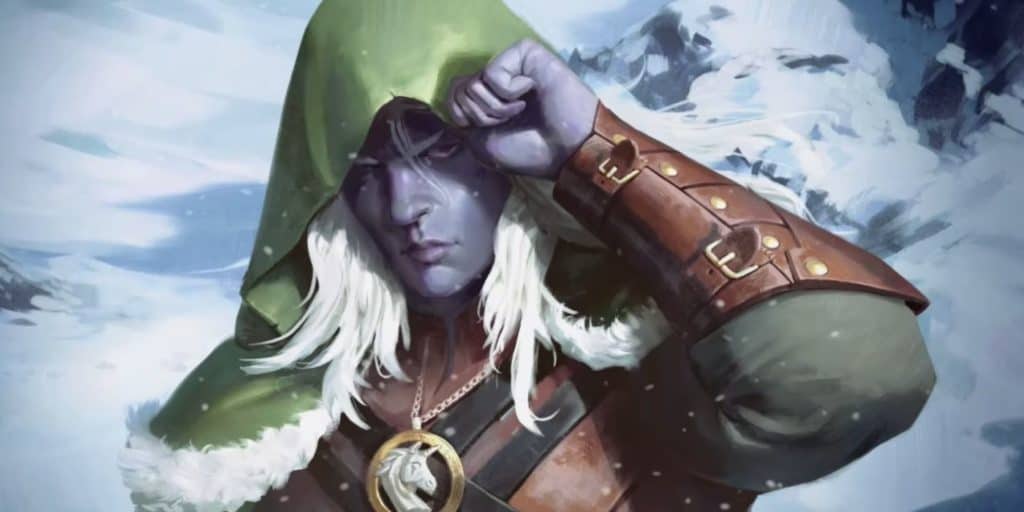The new One D&D rules look like they’re going to run with some of what Tasha’s Cauldron did in terms of decoupling abilities from race. Some people are upset about this. I am not one of them, and you shouldn’t be either.
To start, I want to recommend everyone check out this iO9 post on the topic if for no other reason than in discussions of race, it is usually a good idea to listen to the people most affected by the discourse. I can’t build much on what they say here: the idea of race & racial essentialism remain problematic in D&D and the rationale / defense provided is lazy.
The “accessibility” line (that D&D needs to be accessible to hobby newcomers – a claim from some in the industry) is tired particularly in light of WoTCs big commercial moves – it’s stereotyping for the sake of capitalism. Make the game easier to play by pandering to stereotypes in order to increase the number of players following the path of least resistance.

I also believe that in a world less socially conditioned towards “supremacy” and exclusion, that is to say, a more just, inclusive, and welcoming world, racial essentialism will seem increasingly anachronistic and harmful. This tactic of “accessibility” for new players, in other words, may very well backfire. If we’re all working towards making the world a less racist place, why would we play a game that encourages racial essentialism in its core rules?
90% of what people would want to see in their “builds” is still possible – want a strong orc that does extra damage? Okay, pick the appropriate background and what not and you’ve basically got the same 5e orc now in D&D One. You can, for the most part, still do what you wanted to do, so what’s the big problem?
Short answer: there isn’t one.
Long answer: now players have to think about why they want what they want in the first place. Now they have to consider that since an orc or a goblin or a dwarf can be agile, erudite, charming, whatever, then maybe their beliefs about those species are, in fact, what they fear that they are, which is socially constructed.

In our world, reading about fantasy creatures, we’re dealing with our own legacies of exclusion and oppression. We, and I for the most part mean “mainstream Americans” (this itself is all a socially constructed paradigm of taxonomy, but that’s a whole *topic*) are inheritors of a taxonomic tradition. Put things in boxes, label them, classify them, make a zoo. You can see the problems with this concept coming home to roost every day in American life: what is a gender? Why does it matter? What is a sexual identity?
What is an identity?
The “Western” way of looking at things, the one I’m sort of hinting at and describing in really broad terms because this post (and let’s be real, this post is going to turn into a series real quick) is system-oriented. We perpetuate an ideology of categorization. We partition, we wall off, we describe and define – and when an individual emerges, we try to figure out what box to put them in: Blue blanket, pink blanket, white / black / Asian / other.
But the sign is not the signified, the system is not reality. Not the bird, but the shadow of the bird, flying. And that’s what’s going on here with One D&D’s move away from racial essentialism, imperfect though it is (and it is rather imperfect, but it is an improvement).

Tolkien was a product of his environment – as are we all. The Frankfurt & Birmingham schools were but twinkles in the eyes of their respective institutions. Material positivism, logocentrism, and a long history of imperialism were the orders of the day. For Tolkien to make broad assertions about what it means to be a human, an orc, a halfling, etc. is very much in line with the thinking of the era.
But that was, it must be noted, nearly 100 years ago. And while 100 years is not a long time cosmologically speaking, it is beyond the scope of one human life – and we, as humans who get one human life each, risk a very real sort of psychical death when we decide to enslave ourselves to tradition and traditional ways of thinking based only on the longevity of the tradition. Old ideas can be good ideas – not saying they aren’t. But an old idea that cannot withstand critical scrutiny is an old, bad idea.
The scholarship and culture to which I personally am responding, the “Western,” has undergone and is still undergoing earth-shaking change. Tolkien probably thought he was being quite progressive by suggesting elves, humans, dwarves, and shire-folk could live happily together, and at the time, that was progressive – but he didn’t include orcs, and some men were beyond redemption, and that is through a contemporary lens problematic. I come here not to bury Tolkien, but to contextualize him, and along with him, many preconceptions of speculative fiction.
So to sum up: race in D&D and often times in speculative fiction (science fiction & fantasy) has been a way to create people who don’t matter so that protagonists (aka heroes aka players) can kill indiscriminately. Race is used to create consequence-free violence, and the current cultural moment realizes there is no such thing as consequence-free violence.
This has all been about making D&D less race-essentialist (less racist, for short). In my next post, I’ll discuss how racism can still fit into D&D story arcs without resorting to game-level racial essentialism.
Hint: It’s not about race-in-game, it’s about racists-in-game, and how player characters encounter them.